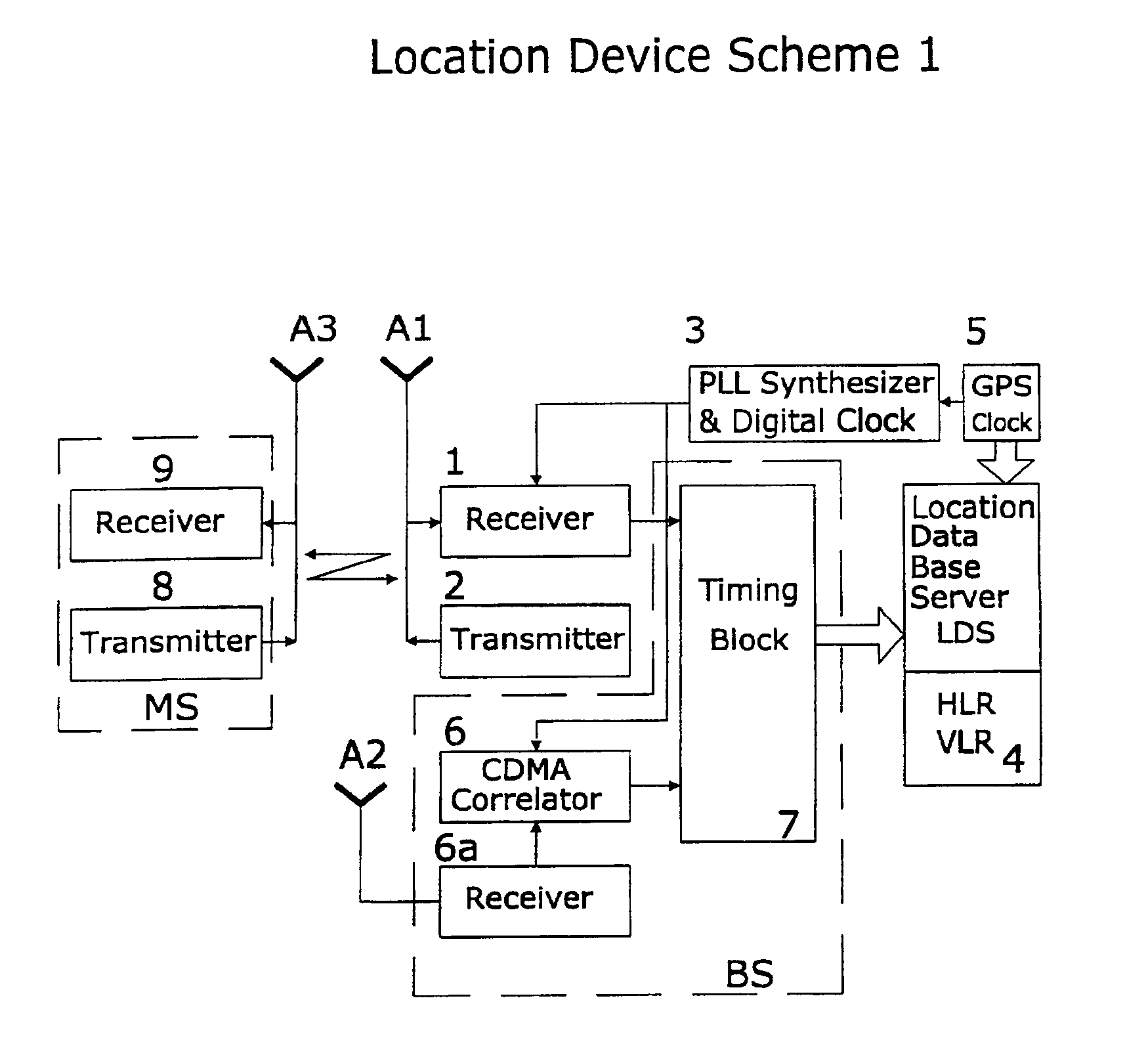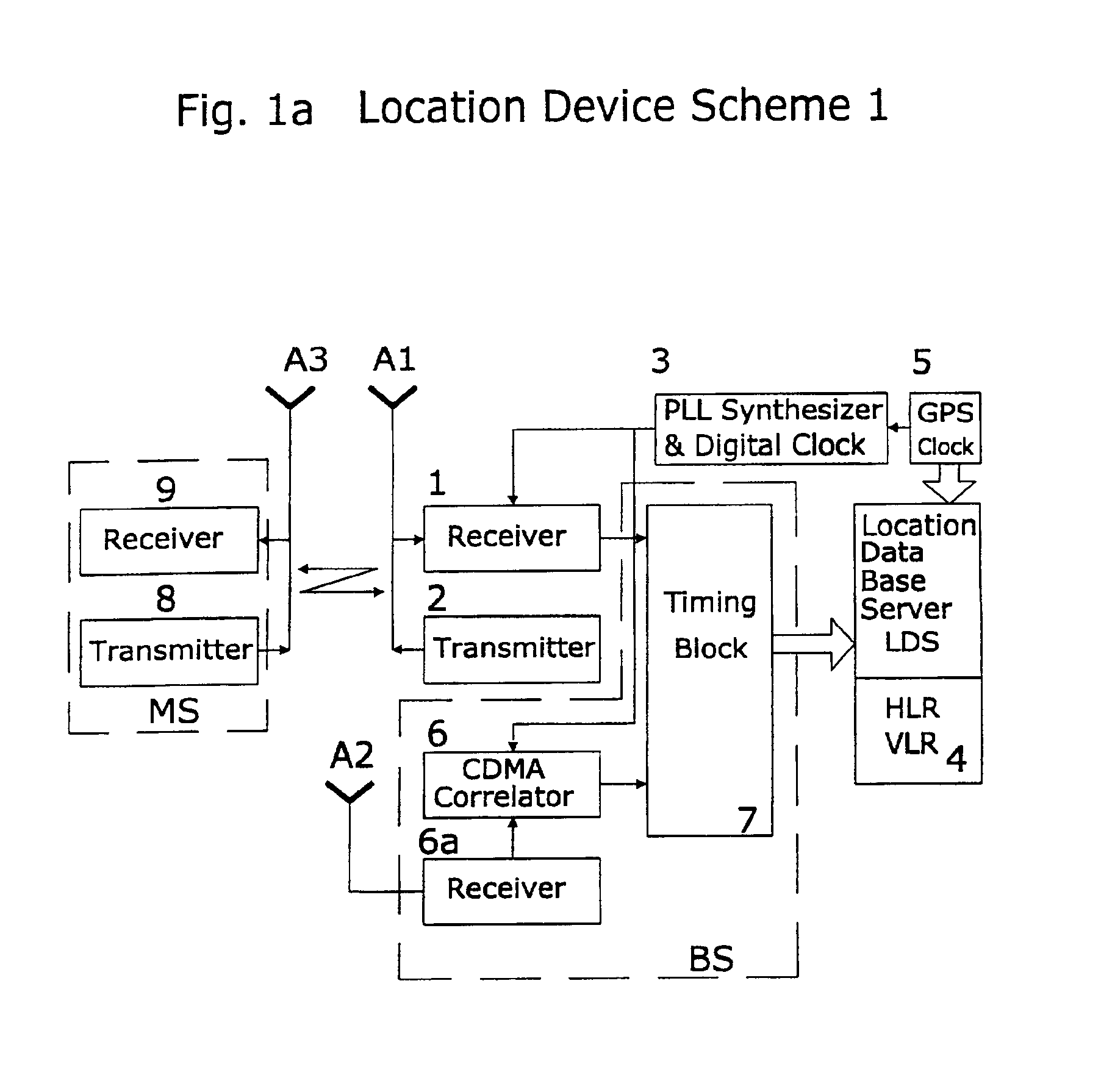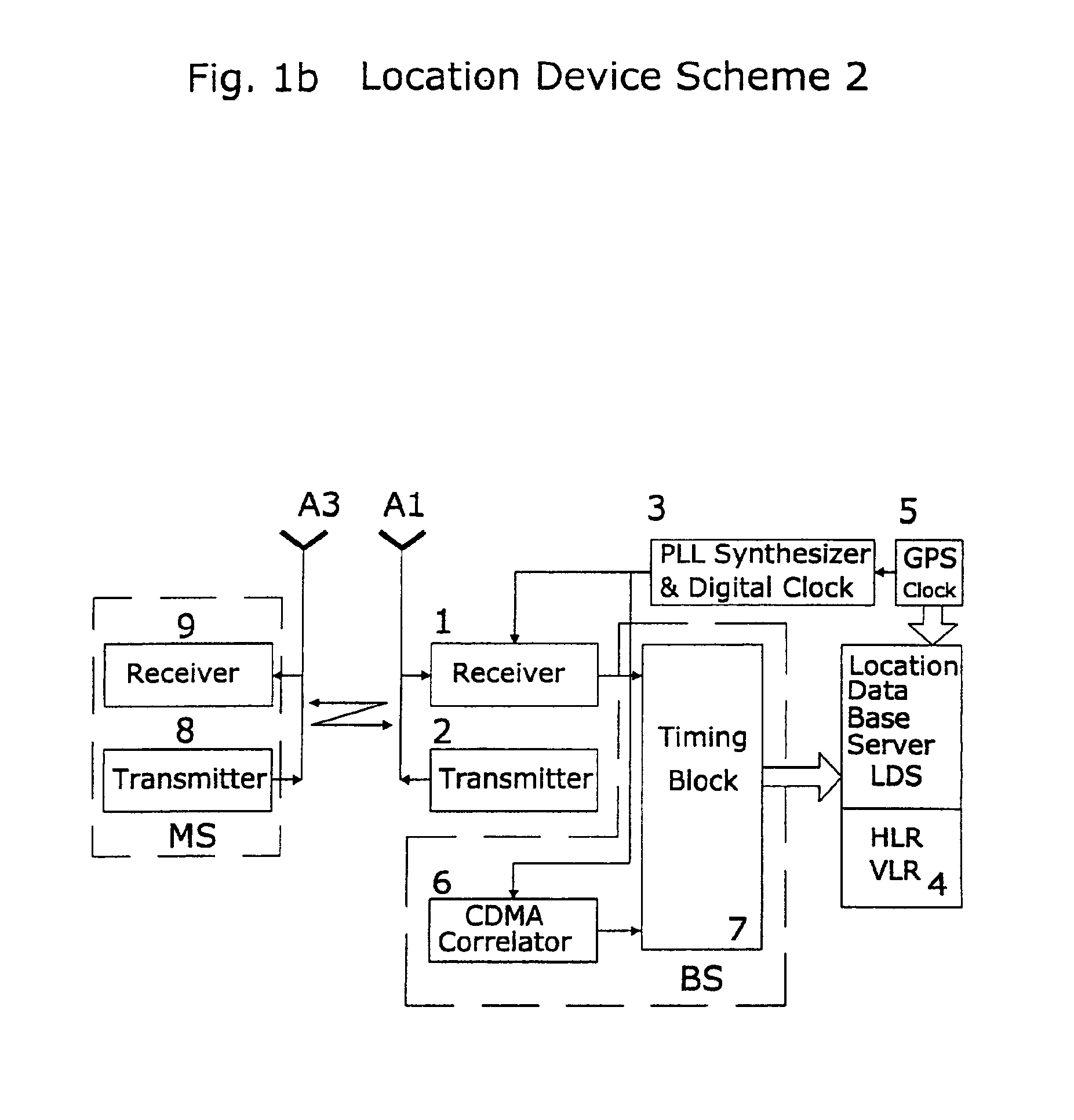Method and system for mobile station positioning in cellular communication networks
- Summary
- Abstract
- Description
- Claims
- Application Information
AI Technical Summary
Benefits of technology
Problems solved by technology
Method used
Image
Examples
case 3
nge Configuration
D12=D13=D14=0
[0128]In this case, the coordinates of a MS can be computed by the formulas
x=−Δx / Δ
y=−Δy / Δ
z=−Δz / Δ
where Δx=1 / 2S1-S2y2-y1z2-z1S1-S3y3-y1z3-z1S1-S4y4-y1z4-z1Δy=1 / 2S1-S2x2-x1z2-z1S1-S3x3-x1z3-z1S1-S4x4-x1z4-z1Δz=1 / 2S1-S2x2-x1y2-y1S1-S3x3-x1y3-y1S1-S4x4-x1y4-y1Δ=x2-x1y2-y1z2-z1x3-x1y3-y1z3-z1x4-x1y4-y1z4-z1
The last determinant Δ is nonzero as the four base stations do not lie on a straight line.
Redundancy, Ambiguity, and Robust Location Estimators
[0129]The TDOA method described above gives in general two candidate points for a MB position in the four base stations case (see formulas for z above). Other location methods could be used here as well.
[0130]Thus, the AOA method could be applied for the six paired combinations of base stations producing additional candidate points, and the attenuation method would also give a number of feasible locations. The total set of candidate locations would have to be sorted out because of presence of probable outliers res...
PUM
 Login to View More
Login to View More Abstract
Description
Claims
Application Information
 Login to View More
Login to View More - R&D
- Intellectual Property
- Life Sciences
- Materials
- Tech Scout
- Unparalleled Data Quality
- Higher Quality Content
- 60% Fewer Hallucinations
Browse by: Latest US Patents, China's latest patents, Technical Efficacy Thesaurus, Application Domain, Technology Topic, Popular Technical Reports.
© 2025 PatSnap. All rights reserved.Legal|Privacy policy|Modern Slavery Act Transparency Statement|Sitemap|About US| Contact US: help@patsnap.com



